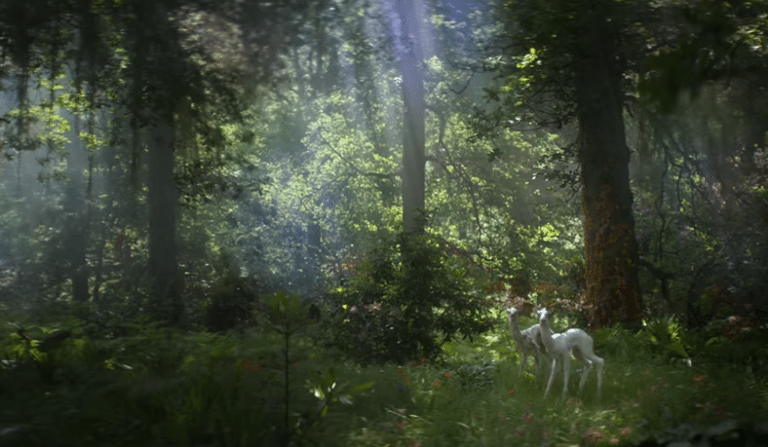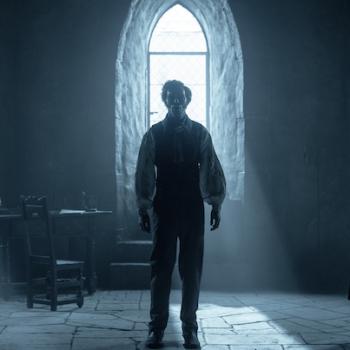
The End (?)
We could go deeper into the symbolism of the Shimmer—a growing structure that, in my Plugged In review, I likened to a womb. That echoes Noah, too, whose ark served as a womb of sorts for a nugget of creation. Or of Mary, mother of Jesus, sometimes called the Ark of the New Covenant. She held, after all, the promise of all of creation.
But it more resembles a new Eden of sorts, and a new Armageddon, embodying creation and destruction all at once. And, as the movie draws to a close, it even gives us something like an Adam figure. An Eve. And even a destructive, cataclysmic fruit, held gently in one’s hands.
Annihilation’s ending is pretty ambiguous, as are all the movie’s spiritual echoes. Sometimes it can feel as though the Shimmer and everything in it are indeed the work of an extraterrestrial Lucifer, fully reflecting the movie’s name. At other times, it can feel as though the film suggests it’s a corrective action—a cleansing of our collective sins and weaknesses, a new and beautiful work built to replace the old. It leaves the possibility of the Shimmer being both divine and infernal, terrible and beautiful. Again, an echo of the paradox of the ouroboros.
Annihilation is not a film with a clear message or moral to give. But it is, in its own way, a myth—and one that draws our attention to other stories, and other truths to ponder.













